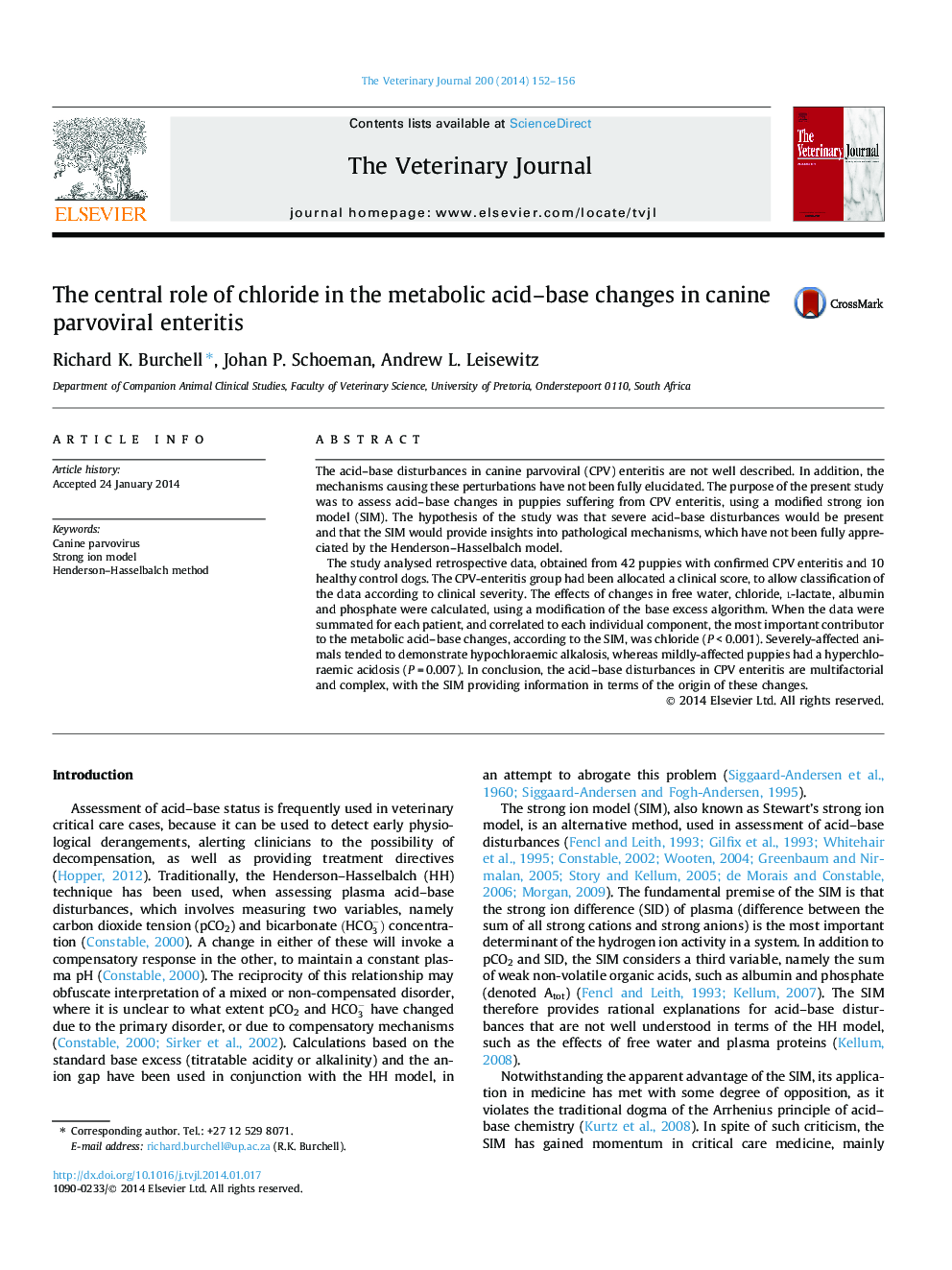| کد مقاله | کد نشریه | سال انتشار | مقاله انگلیسی | نسخه تمام متن |
|---|---|---|---|---|
| 2464014 | 1111769 | 2014 | 5 صفحه PDF | دانلود رایگان |
The acid–base disturbances in canine parvoviral (CPV) enteritis are not well described. In addition, the mechanisms causing these perturbations have not been fully elucidated. The purpose of the present study was to assess acid–base changes in puppies suffering from CPV enteritis, using a modified strong ion model (SIM). The hypothesis of the study was that severe acid–base disturbances would be present and that the SIM would provide insights into pathological mechanisms, which have not been fully appreciated by the Henderson–Hasselbalch model.The study analysed retrospective data, obtained from 42 puppies with confirmed CPV enteritis and 10 healthy control dogs. The CPV-enteritis group had been allocated a clinical score, to allow classification of the data according to clinical severity. The effects of changes in free water, chloride, l-lactate, albumin and phosphate were calculated, using a modification of the base excess algorithm. When the data were summated for each patient, and correlated to each individual component, the most important contributor to the metabolic acid–base changes, according to the SIM, was chloride (P < 0.001). Severely-affected animals tended to demonstrate hypochloraemic alkalosis, whereas mildly-affected puppies had a hyperchloraemic acidosis (P = 0.007). In conclusion, the acid–base disturbances in CPV enteritis are multifactorial and complex, with the SIM providing information in terms of the origin of these changes.
Journal: The Veterinary Journal - Volume 200, Issue 1, April 2014, Pages 152–156
